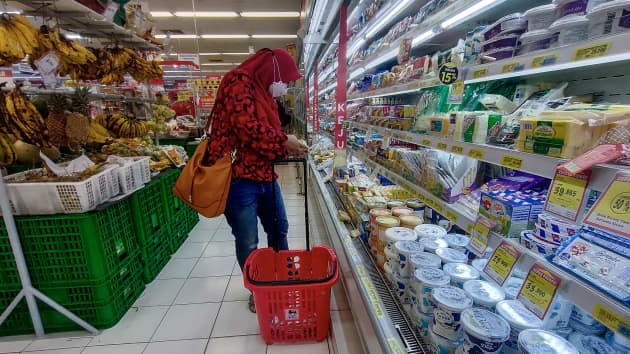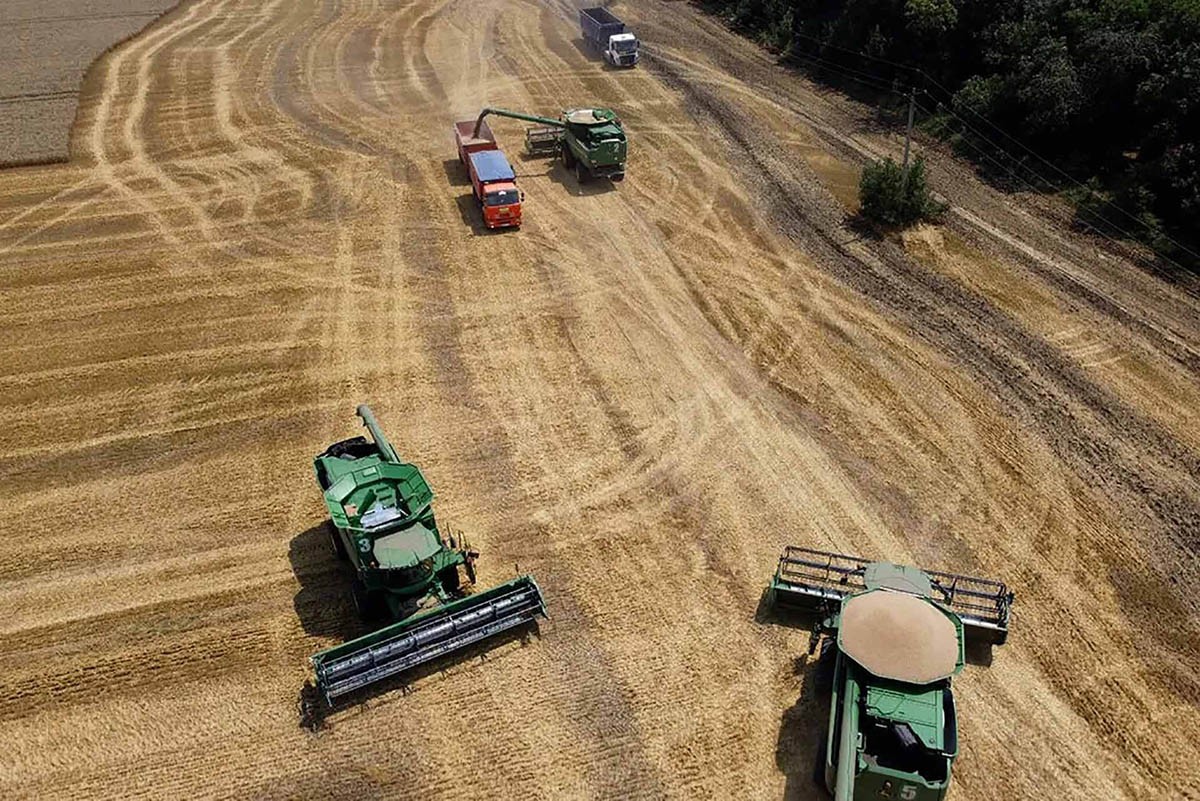
World 'rice bowl' Southeast Asia to face global food insecurity
Latest
 |
| The sharp increase in commodity prices can make people in Southeast Asia fall into difficulty and face the risk of food insecurity. (Source: Getty) |
Rising hunger and malnutrition
The world is confronting an unprecedented food crisis and the risk of famine in many places in 2022 is looming.
Many experts say that the current global food crisis is more severe than the 2008 crisis.
The Russia-Ukraine conflict (the world's two largest wheat producing countries) and the Covid-19 pandemic disrupted global supply chains. Meanwhile, drought in the US, hail in France, dry climate in Argentina, unusual heat in India will reduce wheat production in the 2022-2023 season.
Because of the shortage of supply sources, many producing countries have imposed restrictions on exports. Countries that depend on food imports are in dire straits. All have increased hunger around the world to an unprecedented level.
According to statistics from the World Food Program (WFP) released in April this year, the number of people facing severe food insecurity has more than doubled compared to 2019, up to 276 million people in 81 countries, even before the conflict erupted in Ukraine.
According to the Report on “International Food and Nutrition Security” (SOFI) 2022, the challenge of feeding the world is now more acute than ever due to the effects of climate change, the Covid-19 epidemic and the ongoing conflict in Ukraine.
It is forecast that almost 670 million people will likely live in hunger by 2030, accounting for 8% of the world's population.
In Southeast Asia, the Food and Agriculture Organization of the United Nations (FAO) as well as many experts have warned that, despite being a region with strength in agriculture, it also faces the risk of global food insecurity.
The Food Price Index (FPI) reached an all-time high in March 2022, surpassing the 2007-2008 price levels during the global food price crisis.
According to FAO, the world food price index in May 2022 increased by more than 22% compared to the same period last year. Food prices continue to reach new record highs, directly threatening the lives of people in Southeast Asia.
According to statistics, on average, Philippine people spend 30-40% of their income on food. Therefore, the high prices of food will cause a lot of difficulties for the people of this country.
In many ASEAN countries, child malnutrition and stunted growth stay at a high rate and this can be a signal of a potential food crisis in the region.
Joined efforts to find solutions and take actions
Facing constantly increasing food prices, some Southeast Asian countries have applied food protection policies, halting the export of some items, such as Indonesia banning palm oil exports and Malaysia limiting the exportation of chicken.
Under pressure from the international community, Indonesia has lifted the ban while Malaysia has also partially relaxed the regulation.
In the context of potential food insecurity, FAO recommends that people and governments should seek ways to diversify their food supplies, look towards alternative food sources and reduce their dependence on traditional food crops.
Southeast Asia - the world "rice bowl", holds two of the top three global rice exporters - Vietnam and Thailand. Rice is the most widely consumed commodity in ASEAN, but the region still has to buy wheat and corn from the outside markets.
Over the past decade, wheat imports of Indonesia - ASEAN's most populous country, have more than doubled from 4.8 million tons (2010) to nearly 11 million tons (2019).
Furthermore, wheat and corn are also used to feed the livestock. Meat consumption in the region has grown rapidly, especially in Indonesia, Malaysia, the Philippines and Vietnam.
 |
| Wheat field in Tbilisskaya, Russia. (Source: AP) |
Meanwhile, neither Russia nor Ukraine is expected to normalize their exports in the coming months due to the conflict. Therefore, diversifying the food supply and finding alternative food sources is quite urgent for every country at the time being.
Countries in the region can also take advantage of progress in plant science, including crop protection products and plant biotechnology, analysts say. These are tools of an increasingly important role in promoting food security in Asia and on the globe.
In addition, the responsible use of crop protection products helps farmers produce more food on less area of soil.
Experts said that ASEAN should seriously consider how to build on its existing mechanisms to deal with the wave of price increases in commodities.
One of them is the ASEAN Plus Three Emergency Rice Reserve (APTERR) mechanism which was established in 2011 to prevent rapid increase in rice price inflation and discourage price speculation and trade protectionism among member countries.
In addition, while ASEAN does not have a parallel mechanism for wheat, maize, vegetable oil or fertilizer, it is necessary to find ways to maximize its regional frameworks to provide complementary mechanisms in order to overcome the newly-budding food price crisis.
























